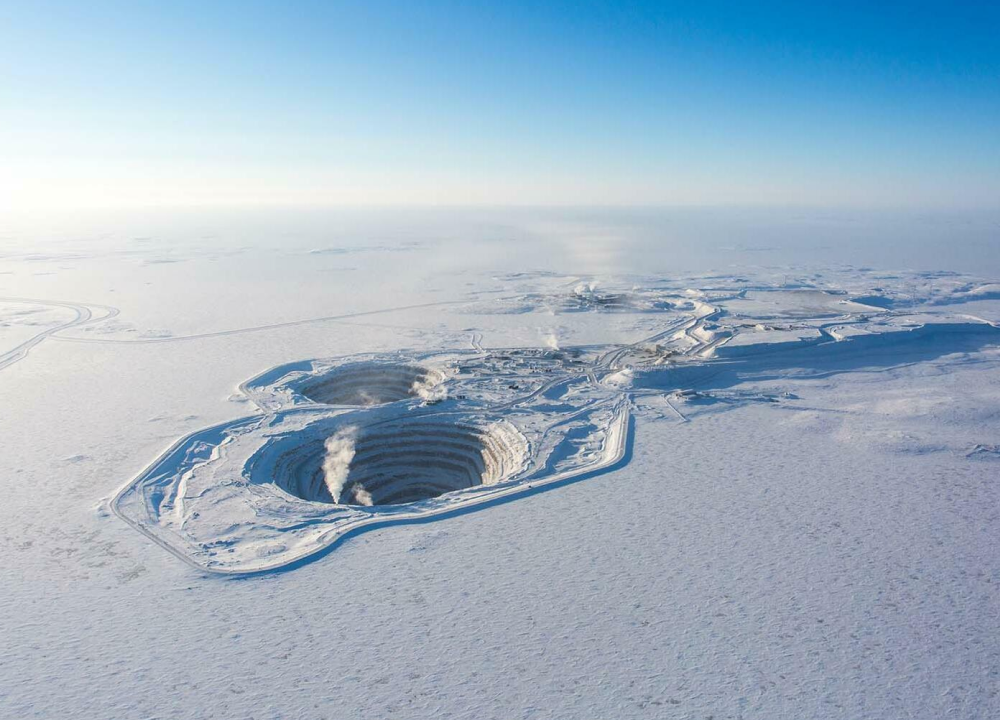
Pictured: Diavik Diamond Mine, the Rio Tinto-owned operation
In a groundbreaking move towards sustainable energy, Rio Tinto’s Diavik Diamond Mine has announced its visionary undertaking of constructing the largest solar power plant in Canada’s northern territories. This monumental initiative is set to feature an impressive array of over 6600 solar panels, poised to generate a substantial 4200 megawatt-hours of carbon-free electricity annually, effectively revolutionising the energy landscape.
The solar power plant will be situated at the heart of the Diavik Diamond Mine, heralding a momentous step towards responsible and eco-friendly energy generation. The plant is anticipated to cater to up to 25 percent of the mine’s energy needs during the upcoming closure operations, which are projected to extend until 2029, with regular production expected to conclude in early 2026.
Distinguishing itself from conventional solar installations, the facility will be equipped with cutting-edge bi-facial panels. These innovative panels will harness energy not only from direct sunlight but also from the sunlight reflecting off the pristine snow that blankets the Diavik site for a significant portion of the year. This ingenious approach is anticipated to slash diesel consumption at the facility by an astonishing one million litres annually, resulting in a commendable reduction of 2,900 tonnes of CO2 equivalent emissions, akin to removing 630 cars off the road.
Angela Bigg, president and chief operating officer of the Diavik Diamond Mine, expressed her enthusiasm for this groundbreaking venture, “I am delighted that we will be significantly increasing our renewable power generation with the largest solar power plant in Canada’s northern territories at the Diavik Diamond Mine. Through its wind-diesel hybrid power facility, Diavik is already a leader in cold climate renewable technology and this important project reinforces our dedication to reducing our carbon footprint. I would like to thank both the Government of the Northwest Territories and the Government of Canada for their support to deploy this project,” she says.
Caroline Wawzonek, finance minister of the Government of the Northwest Territories says, “The Diavik solar power plant is a welcome sign of Rio Tinto’s commitment to renewable energy and reducing emissions. The Government of the Northwest Territories is pleased to have provided support through the Large Emitters GHG Reducing Investment Grant program, one of the original pieces of our made-in-the-NWT approach to the federal carbon tax. This collaboration exemplifies our commitment to facilitating sustainable development while reducing greenhouse gas emissions in the Northwest Territories and should be a signal of how our economic development can continue to position us as leaders in these spaces.”
As the project gains momentum, Diavik is actively collaborating with the Government of the Northwest Territories and community partners to ascertain how the surplus renewable energy infrastructure can optimally benefit the region post-mine closure. Rio Tinto’s far-reaching decarbonisation initiatives extend across its global operations, with the aim of halving its Scope 1 and 2 greenhouse gas emissions by 2030 and ultimately achieving net zero emissions throughout its operations by 2050.
Anticipated to break ground in the upcoming weeks, construction will culminate in the first half of 2024, positioning the solar power plant as a formidable force in the renewable energy sector.
Further reading: